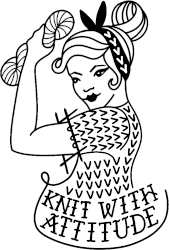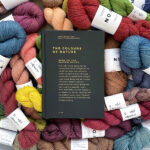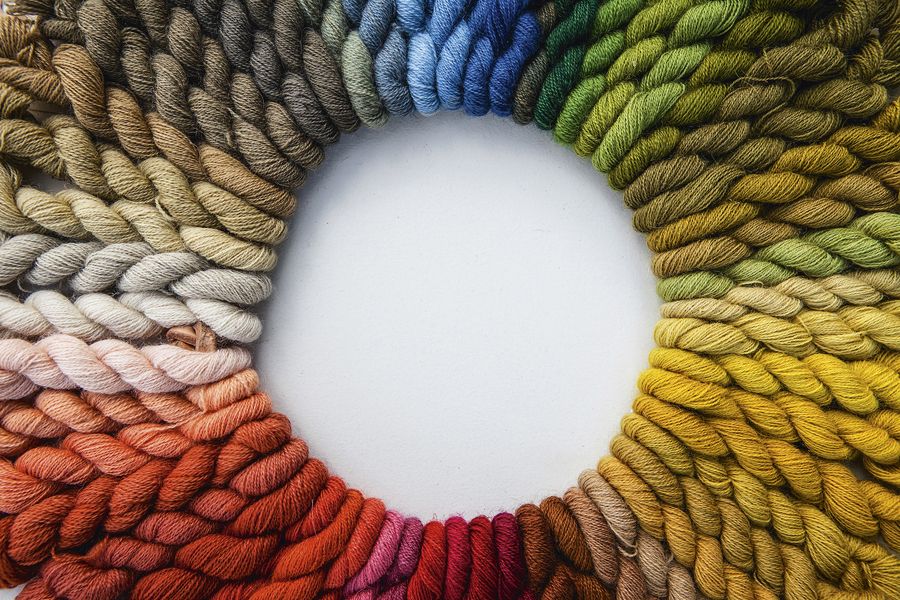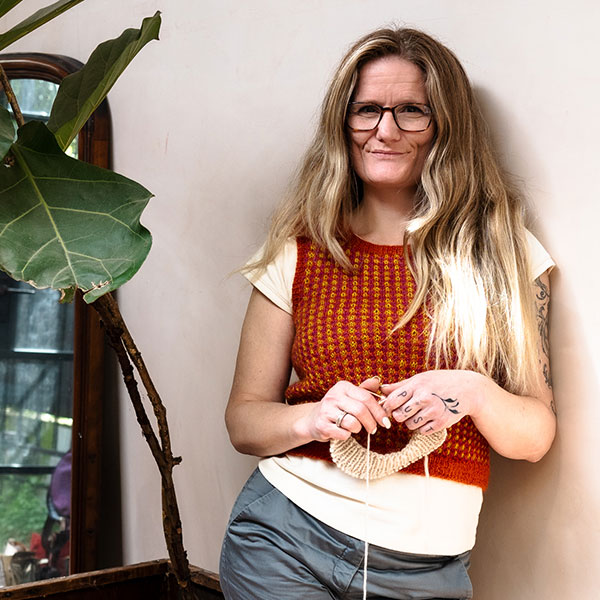The Colours Of Nature
It's with great excitement that the newly translated The Colours of Nature book by Anne Støvlæk Kjær and Louise Shelde Frederiksen of G-uld has arrived at Knit With Attitude. Ever since we attended G-uld's Dyeing Workshop in 2019 we have been entranced by the power of natural dyes. Every time a new batch of yarn from G-uld arrives in the shop we are in awe of their mastery of the craft. Now you can conjure up that colour magic yourself with this beautifully informative book. In this post I will take a look at the subjects covered inside the book and also go down memory lane with mine and Maya's visit to G-uld in Denmark.
Inside you will find:
A short history of natural dyeing with plants in Nordic culture. Featuring facts from ancient times to present day showing how the craft of natural dyeing has changed very little.
A beginner’s guide on how to get started with natural dyeing and collecting plants in nature. Learn about what plants to collect and when to collect them. How to store and dry foraged materials or sourcing store bought dye stuffs. Combining craft and nature to build up a stock of colours.
An overview of colours and fibres suitable for natural dyeing. What materials to use to achieve a particular colour with light fastness tips and factors effecting colours. Advice for dyeing on different cloth and yarn types including plant fibres and animal fibres.
Recipes for dyeing with fresh and dried plant material. Looking closer at the different dye materials with recipes and quantities for dyeing. Including tips, preparations and first and second dye bath advice. Also how to darken colours with different materials, handy tips and historic facts.
An overview of plant materials to collect in Nordic nature and which to buy such as madder root, cochineal and indigo. A glossary of pictures to help identify those dye materials growing in the wild. With inspiration on building up your own collection of hand dyed colours.
A guide to preparing yarn and fabric for dyeing that lasts. Tips and recipes for mordanting methods to prepare a variety of fibres for dyeing. Also what to do after dying, including over-dyeing and rinsing.
A guide to tools used in the various processes dyeing. A list of tools that you might need including the ones that are essential and the ones that are less so. Tips for where you can dye and how to prepare the dye bath.
So after that little look through The Colours of Nature I am feeling very nostalgic about our trip to Denmark.
We dyed our own circle of colour with an amazing bunch of people in the middle of the Danish countryside. You can read all about it in the blog post: A Wonderfull Adventure.
If you have been struck by dyeing inspiration I also wrote a blog post on What Yarns to Dye like the Undyed G-uld Alpaca above which is perfect.
Happy Dyeing!















